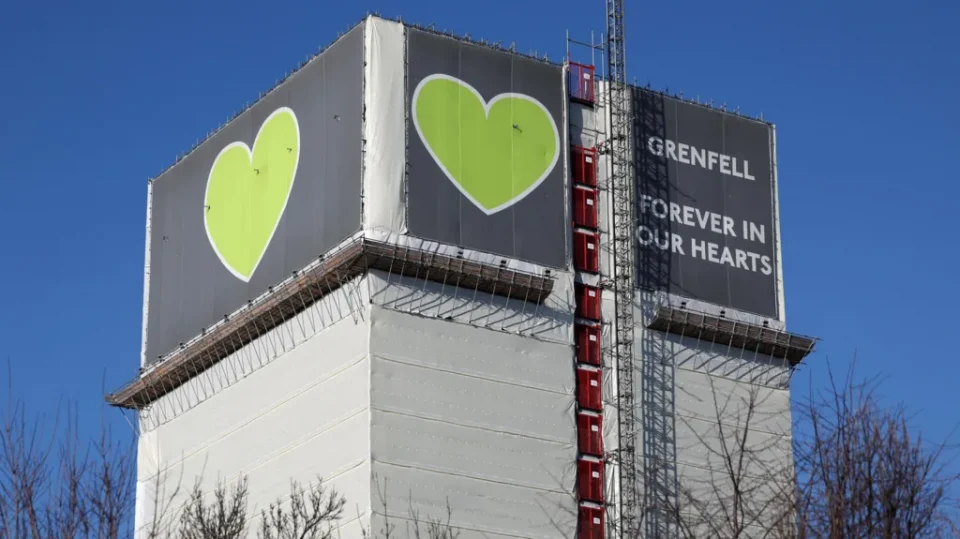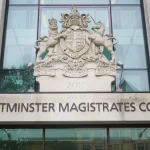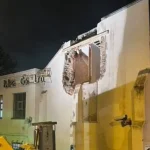The government has announced that Grenfell Tower will be demolished, nearly eight years after a devastating fire claimed the lives of 72 individuals.
The demolition process is anticipated to span approximately two years and will be carried out “with sensitivity.” The government has stated that no alterations to the structure will occur before the eighth anniversary of the tragedy in June.
This decision has elicited mixed emotions among local residents, victim families, and survivors. Some individuals feel strongly that the West London tower should be preserved as a memorial to the tragic events of 2017, while others contend that its presence serves as a painful reminder for those who lost loved ones and advocate for the establishment of a memorial instead.
“In discussions, it is evident that this site holds sacred significance,” the government remarked in a statement, adding that there is no agreement on its future.
The government indicated that materials and sections of the 24-story edifice could be used for a memorial if the community desires it.
This decision to dismantle the structure follows assessments from engineers who declared the tower to be “significantly damaged.” According to a 2020 report, weather conditions have worsened the fire damage sustained at the upper levels.
Experts have suggested that the building’s condition will “continue to deteriorate” and that it remains stable only due to the additional protective measures implemented, the government noted.
Furthermore, engineers have concluded that it is “not feasible” to preserve many of the building’s floors for a permanent memorial, prompting Deputy Prime Minister Angela Rayner to state that it would be “unfair” to maintain some floors while dismantling others, as this could be “deeply distressing” for survivors.
The government plans to select a specialized contractor within the ensuing months to formulate a detailed strategy for the tower’s demolition. This “careful and sensitive progressive deconstruction” will occur behind protective wrapping around the building.
For over seven years, the area surrounding the tower has been enclosed with temporary barriers, continuing to affect the local community.
When deconstruction commences, experts will methodically dismantle the tower, starting from the top and working their way down. The government has dismissed suggestions from some that the lower levels could remain as part of the proposed memorial, citing that it would be unjust to those connected to the flats scheduled for removal.
The focus will remain on honoring the memory of the deceased while ensuring the area remains uncontaminated by dust or debris.
Some survivors and grieving families argue that the tower should remain intact until legal actions related to the fire are resolved. The Metropolitan Police and the Crown Prosecution Service have indicated that no charges will be filed until late 2026.
During a recent meeting with Rayner, some former residents learned of the tower’s impending demolition. A representative from Grenfell United, an organization associated with bereaved families and survivors, stated that none present at the meeting endorsed the demolition plan, and labeled the decision to disregard their opinions as “disgraceful and unforgivable.”
Kimia Zabihyan of Grenfell Next of Kin, which supports bereaved families, described the atmosphere of the meeting as “charged,” yet acknowledged that Rayner seemed to act with sincere intentions.
Downing Street confirmed that Rayner organized the meeting to ensure that bereaved families and survivors were the first informed of the government’s decision. She offered opportunities for family members and survivors to meet both in person and online at various times and locations, and had “listened to many perspectives” during the process, according to the Prime Minister’s spokesperson.
Emma O’Connor, a former resident who escaped from the 20th floor, criticized the lack of proper consultation regarding the plan and urged Rayner to “show us some respect.” She launched a petition advocating for local residents, survivors, and bereaved families to have a vote on the tower’s future.
In its statement, the government affirmed that Rayner would ensure bereaved families, survivors, and residents “continue to have opportunities to discuss” issues concerning the tower, committing to keep their voices central in this process.
Mayor of London, Sir Sadiq Khan, described the decision as a “somber moment,” expressing support for Rayner’s commitment to establishing a memorial and maintaining engagement with the Grenfell community.
Hamid Ali Jafari, who lost his father in the fire, voiced concerns that demolishing the tower might lead to the tragedy being forgotten. “It feels as if they are trying to erase memories, making it easier to conceal what happened,” he lamented. “The tower is one of my father’s resting places, alongside his cemetery.”
Conversely, some community members advocate for the tower’s removal. Before the announcement, Mushtaq Lasharie, head of the Lancaster West Residents’ Association, stated that he and “the overwhelming majority” of locals supported the tower’s demolition, explaining that safety concerns allowed for “no other option” and that a “small minority” wished for it to remain as a “symbol of remembrance.”
Local resident Abbas Dadou described the tower as “haunting” everyday life, stating, “It’s easy for people who don’t live here to suggest it stay forever. The building is structurally unsafe and needs to be taken down eventually.”


